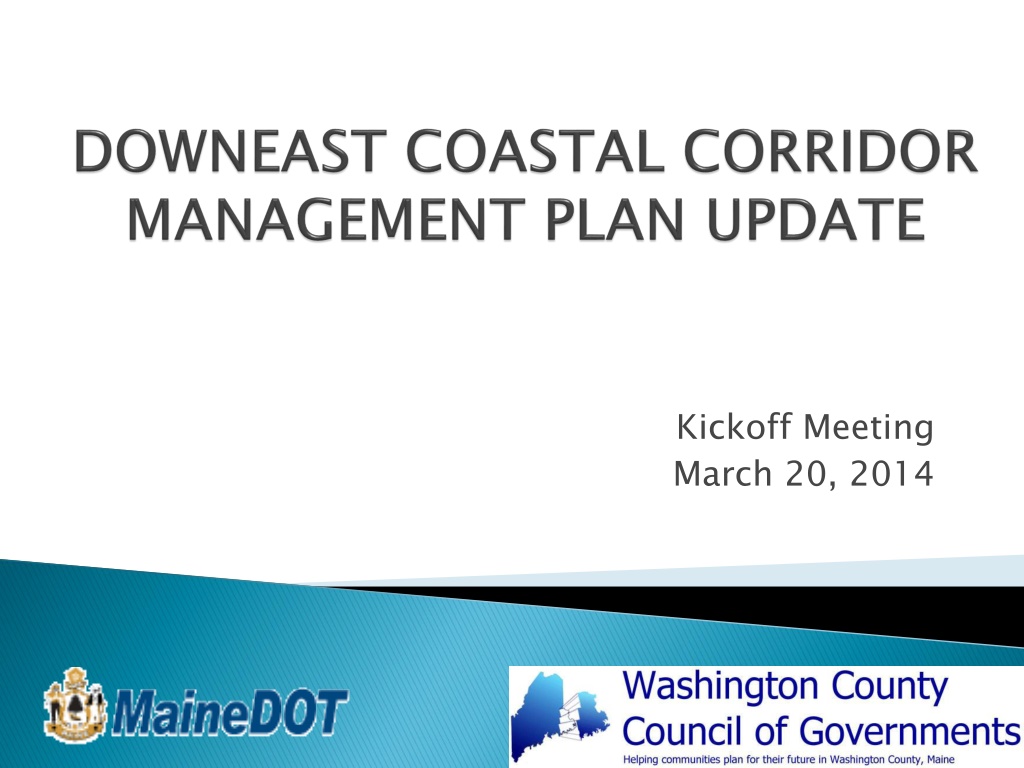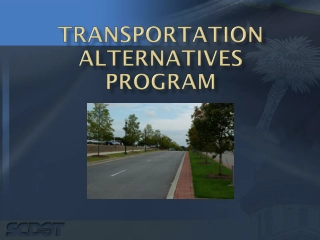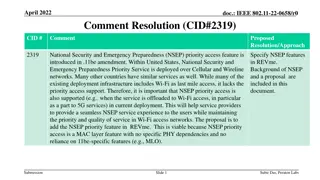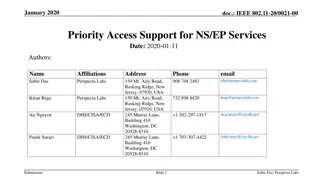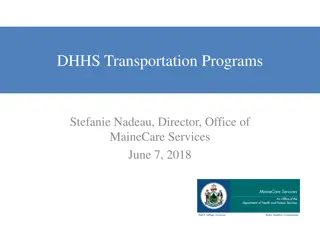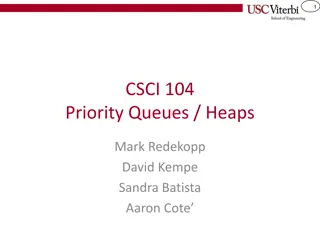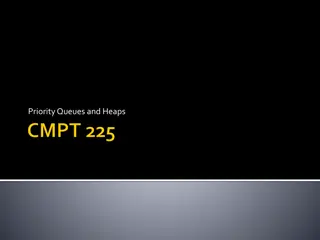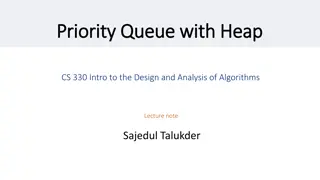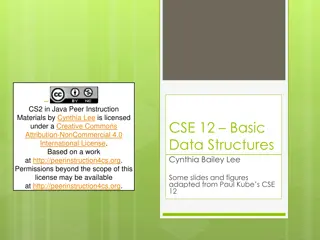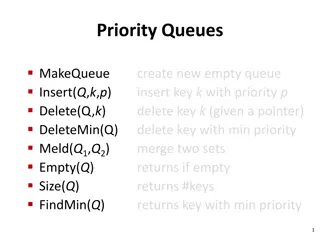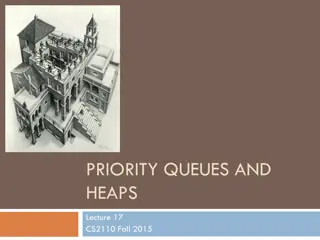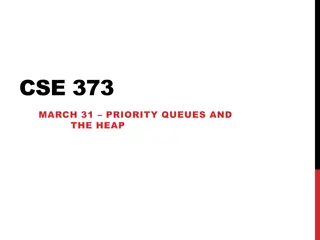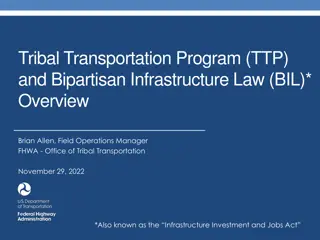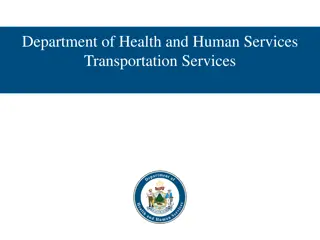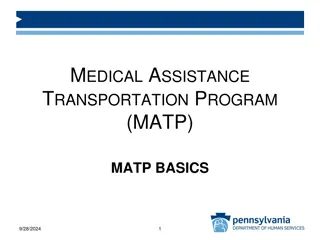Priority Assessment for Transportation Plans
Assessing and prioritizing partially implemented and unimplemented recommendations in transportation plans is crucial for achieving regional goals. Guidelines for high, medium, and low priority recommendations are provided to aid in decision-making. Factors impacting future development along corridors are also highlighted, emphasizing the importance of considering driving factors and corridor demand.
Download Presentation

Please find below an Image/Link to download the presentation.
The content on the website is provided AS IS for your information and personal use only. It may not be sold, licensed, or shared on other websites without obtaining consent from the author.If you encounter any issues during the download, it is possible that the publisher has removed the file from their server.
You are allowed to download the files provided on this website for personal or commercial use, subject to the condition that they are used lawfully. All files are the property of their respective owners.
The content on the website is provided AS IS for your information and personal use only. It may not be sold, licensed, or shared on other websites without obtaining consent from the author.
E N D
Presentation Transcript
Kickoff Meeting March 20, 2014
OVERVIEW: Call to order and introductions Major changes since 2010 DCC plan (available online) Prioritize previous plan recommendations Update driving force matrix & scenarios Future meeting date(s) and data needs
Decreasing Vehicle Miles Traveled (VMT) Increasing demand for transit & ride-sharing Down East Sunrise Trail completed & opened New marine freight imports-exports via Eastport Third designated scenic byway Bold Coast More towns with comp plans/LU ordinances More conserved lands Updates for driving forces and scenarios: It s tough to make predictions, especially about the future. It s tough to make predictions, especially about the future. -Yogi Berra (paraphrasing others)
Eight transportation-related plans over past ten years still have unimplemented or partially implemented recommendations Primary cause: lack of funding & staff time Still high-priority ? Still even relevant ? Increasing costs + decreased funding = need to reexamine and prioritize regional goals Distinguish between wants and needs
Task Group Standards for Prioritizing Partially Implemented and Unimplemented Recommendations Please use these guidelines to assess priorities for unimplemented & partially implemented items in this table. High Priority: This recommendation should be implemented as soon as a viable funding source can be identified, even if it means delaying other deserving projects. Medium Priority: While not as urgent as the high-priority recommendations, this is an important project that will promote regional transportation and economic development goals when it is implemented. Low Priority: Although this recommendation remains a worthwhile undertaking for the long term, it is probably not feasible in the current and near-future funding environment. Outdated/Not Cost-Effective: This recommendation is unlikely to promote any current goals for multimodal transportation and economic development in Washington County.
Factors or trends that affect future development along corridors. Driving factors => future development => Factors or trends that affect future development along corridors. => future development; => corridor demand Major categories of driving factors: Socioeconomic conditions Infrastructure & new technology Policy choices at local, state, federal levels Built & natural environment along corridor
DRIVING FORCES UPDATE DRIVING FORCES UPDATE DRIVING Economy Natural resources DRIVING FORCE: Economy FORCE: Likelihood of Growth Medium Likelihood of Growth Impact on Transportation Impact on Transportation High Overall Impact (Scale of 1- -5) Overall Impact (Scale of 1 2 5) Manufacturing Medium High 2 Energy Low Low 5 Wholesale or retail trade Tourism, hospitality, & local culture Science, technology, education Health care & social services Size of workforce High Medium 2 Medium High 2 High Medium 2 High Medium 3 Medium Medium 3 Retirees & second home purchases Other? High High 4
DRIVING Social Trends Youths and Teens DRIVING FORCE: Social Trends FORCE: Likelihood of Growth Low Likelihood of Growth Impact on Transportation Low Impact on Transportation Overall Impact (Scale of 1 5 Overall Impact (Scale of 1- -5) 5) Working age population, 18-60+ Age 60+, retired or disabled Under 60 and retired, semi-retired, disabled, or not currently seeking paid work Telecommuters, farmers, others who work primarily from their homes Other? Low Low 5 Medium Medium 3 High Medium 3 Telecommuters, farmers, others who work primarily from their homes
DRIVING Infrastructure New state highways DRIVING FORCE: Infrastructure FORCE: Likelihood of Growth Low Likelihood of Growth Impact on Transportation Medium Impact on Transportation Overall Impact (Scale of 1 5 Overall Impact (Scale of 1- -5) 5) New local roads Medium Low 1 Deterioration of existing roads Public transit High High 1 Medium Medium 4 Sidewalks and multi- user trails Shipping demand (sea- air-rail-truck) Passenger demand (sea- air-rail) Three-phase power High Low 4 Low Medium 4 Medium Medium 5 Medium Low 5 Public water & sewer Medium Medium 2 Broadband or other high-speed Internet Natural gas High Medium 2 Medium Low 5 Windpower Windpower Other?
DRIVING Built & Natural Environment Residential development DRIVING FORCE: Built & Natural Environment FORCE: Likelihood of Growth Likelihood of Growth Impact on Transportation Impact on Transportation Overall Impact (Scale of 1 Overall Impact (Scale of 1- -5) 5) Medium Medium 4 Commercial development Medium Medium 4 Downtown infill & redevelopment Business parks Medium Medium 3 Low Low 5 Land speculation High High Public, private, & non- profit conservation lands Other? Low Low 5
DRIVING Political Actions More reliance on local property tax to meet municipal, state, & federal obligations & mandates Enactment and enforcement of local zoning codes School funding formula and district consolidation challenges Demand from pedestrians, elderly, disabled, and non for investment in alternative transportation and complete streets Other? DRIVING FORCE: Political Actions FORCE: Likelihood of Growth High Likelihood of Growth Impact on Transportation High Impact on Transportation Overall Impact (Scale of 1 1 Overall Impact (Scale of 1- -5) 5) High Medium 2 High High 2 Demand from bicyclists, pedestrians, elderly, disabled, and non- -drivers for investment in alternative transportation and complete streets bicyclists, drivers
DRIVING Travel Demand DRIVING FORCE: Travel Demand FORCE: Likelihood of Growth Likelihood of Growth Impact on Transportation Impact on Transportation Overall Impact (Scale of 1 Overall Impact (Scale of 1- -5) 5) Price of gasoline other petroleum products Seasonal or year-round traffic congestion Access management to preserve high-speed mobility Conflicts interests of commercial and tourism users of the DCC Development of public transit and ride services Other? Price of gasoline and other petroleum products and Medium Medium 3 High High 1 Conflicts between the interests of commercial and tourism users of the DCC Development of public transit and ride- -sharing services between the sharing
Thursdays 12-2 seem best for most (some may need to leave early) Choices: 4/3, 4/25, 5/1 for next meeting Data needs for next meeting Just-in-case meeting: 5/22, 5/29 Public hearing for draft plan (evening meeting): 6/12 or 6/19 No more free lunch you may brown-bag or eat beforehand for future meetings.
Please feel free to ask questions or submit comments anytime:
